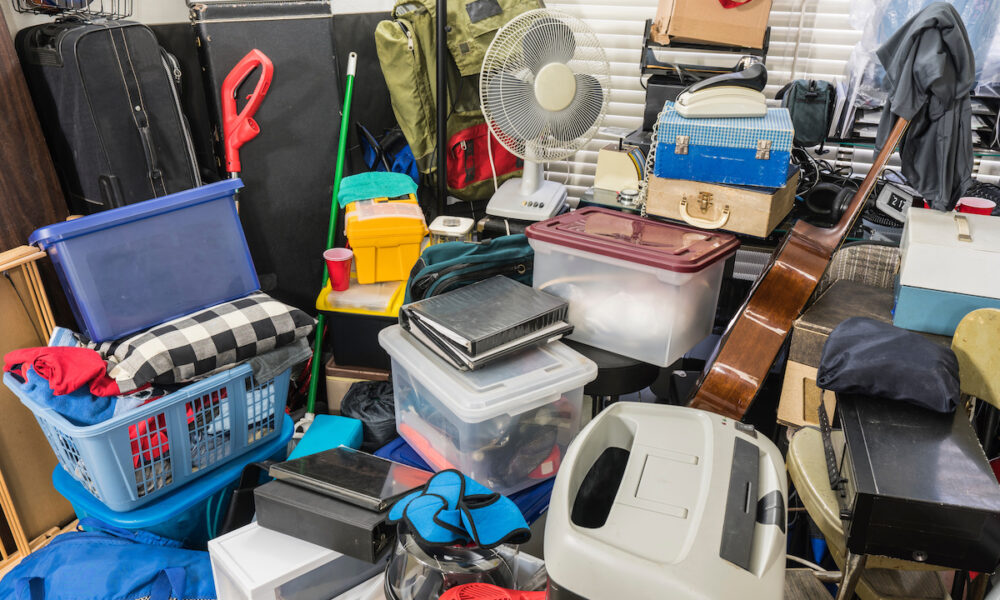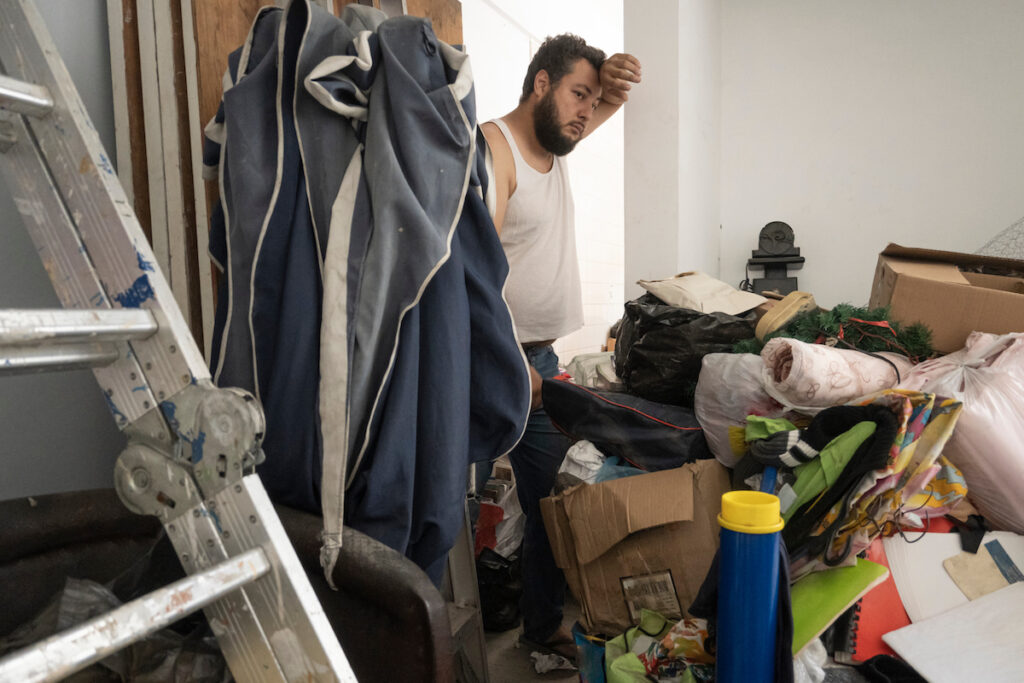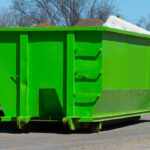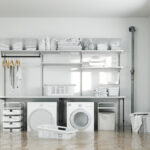
Hoarding disorder is a complex and challenging condition that affects millions of people worldwide. Individuals with hoarding disorder struggle with persistent difficulty discarding or parting with possessions, regardless of their actual value or usefulness. Over time, this accumulation of possessions can lead to cluttered and unsafe living conditions, posing significant health and safety risks for individuals and their families. For many people with hoarding disorder, a hoarding cleanout is a necessary step towards restoring a safe and healthy living environment.
In this article, we’ll explore some of the best tips and strategies for a successful hoarding cleanout, including:
- Planning and preparation
- Sorting and organizing items
- Cleaning and disinfecting the space
- Maintaining a safe and healthy environment
We’ll also discuss the importance of empathy and sensitivity when approaching the hoarding cleanout process and the critical role of seeking professional help and support for individuals and families affected by hoarding disorder.
Plan and Prepare for the Hoarding Cleanout
Planning and preparation are critical steps in a successful hoarding cleanout. Without proper planning, the process can become overwhelming and disorganized, leading to added stress and anxiety for everyone involved.
Here are some essential tips for planning and preparing for a hoarding cleanout:
Establish Goals and Priorities
Before beginning the cleanout process, it’s essential to establish goals and priorities.
- What is the ultimate goal of the cleanout?
- Are there specific items that must be kept or removed?
By identifying these goals and priorities, you can create a clear plan of action and avoid getting sidetracked during the process.
Create a Timeline
A hoarding cleanout can be a time-consuming process, so it’s essential to create a timeline that works for everyone involved. Consider factors such as the size of the space, the extent of the hoarding, and the availability of resources, and set realistic goals for each stage of the process.
Gather Supplies and Equipment
Depending on the scope of the cleanout, you may need to gather supplies and equipment such as:
- Garbage bags
- Storage bins
- Cleaning supplies
- Protective gear
Make sure to have these items on hand before beginning the cleanout process.
Enlist Support
A hoarding cleanout can be an emotionally and physically draining experience, so it’s important to enlist the support of friends, family, or professional help.
Consider hiring a junk removal service, like Just Rubbish Removal, or a professional organizer to assist with the cleanout process and provide guidance and support.

Communicate Clearly
Clear communication is critical during the hoarding cleanout process. Make sure to communicate clearly with all involved parties, including family members, friends, and professional helpers. Set expectations and boundaries, and make sure everyone is on the same page regarding the cleanout process.
By following these tips, you can plan and prepare effectively for a hoarding cleanout, making the process more manageable and less stressful for everyone involved. Remember to approach the process with empathy and sensitivity, recognizing that hoarding disorder is a complex mental health issue that requires ongoing support and treatment.
Sort and Organize Items
Sorting and organizing items is a critical step in a successful hoarding cleanout. It’s essential to approach this process with empathy and sensitivity, recognizing that individuals with hoarding disorder may have difficulty parting with possessions.
Here are some essential tips for sorting and organizing items during a hoarding cleanout:
Establish Sorting Categories
Before beginning the sorting process, it’s essential to establish sorting categories. These may include:
- Items to keep
- Things to donate or sell
- Items to throw away
- Items to recycle
Creating clear categories can help make the sorting process more manageable and organized.
Take Small Steps
Sorting through a large collection of possessions can be overwhelming, so it’s essential to take small steps.
Focus on one area at a time, such as a single room or even a single shelf or drawer. Celebrate small victories, such as completing a single sorting category, to stay motivated and on track.
Use the Four-Box Method
The four-box method is a popular method for sorting items during a cleanout. This method involves using four boxes or bags, labeled Keep, Donate/Sell, Trash, and Unsure. As you sort through possessions, place each item into one of the four boxes based on its category.
Consult with the Individual
If possible, consult with the individual with the hoarding disorder during the sorting process. This can help to ensure that important possessions are not accidentally discarded and can provide a sense of control and involvement in the process.
Seek Professional Help
For individuals with severe hoarding disorder, it may be necessary to seek professional help for the sorting process.
A mental health professional or professional organizer can provide guidance and support during the sorting process, helping to make it less overwhelming and stressful.
The idea is that by following these tips, you can sort and organize possessions effectively during a hoarding cleanout, making the process more manageable and less stressful for everyone involved. Remember to keep an open mind and approach the process with empathy and sensitivity, recognizing that a hoarding disorder is a complex mental health issue requiring ongoing support and treatment.
Clean and Disinfect the Space
Cleaning and disinfecting the space is an essential step in the hoarding cleanout process. In severe hoarding cases, there are often health concerns that require this step.
Here are some tips for cleaning and disinfecting the space:
Deep Clean the Entire Space
After you have removed the majority of the unneeded items, clean and disinfect every surface in the space, including floors, walls, and ceilings. Make sure to use appropriate cleaning and disinfecting products to ensure that the space is safe and healthy.
Use Appropriate Cleaning and Disinfecting Products
Use cleaning and disinfecting products that are appropriate for the specific materials and surfaces in the space. Avoid using harsh chemicals that could damage the space or cause harm to those involved in the cleanout.
Hire a Professional Cleaning Service if Necessary
If the space is heavily contaminated, consider hiring a professional cleaning service to handle the job safely and effectively. They will know the best practices and materials to use.

Maintain a Safe and Healthy Environment
Maintaining a safe and healthy environment during a hoarding cleanout is essential for the well-being of everyone involved.
A hoarding environment can be hazardous due to the accumulation of clutter and debris, which can lead to fire hazards, tripping hazards, and the growth of mold and other harmful substances.
Here are some essential tips for maintaining a safe and healthy environment during a hoarding cleanout:
Wear Protective Gear
Protective gear such as gloves, masks, and boots can protect you from harmful substances such as mold, bacteria, and sharp objects. Make sure to wear appropriate protective gear during the cleanout process to reduce the risk of injury or illness.
Handle Hazardous Materials with Care
Hazardous materials such as chemicals, electronics, and batteries require special handling and disposal. Follow proper protocols for handling and disposing of hazardous materials to reduce the risk of injury or harm to the environment.
Keep Exits Clear
During the cleanout process, it’s essential to keep exits clear and accessible in case of an emergency. Avoid blocking doors, windows, or other exits with clutter or debris.
Address Structural Damage
Hoarding can cause structural damage to a home, such as weakened floors or walls. It’s important to address any structural damage before beginning the cleanout process to ensure a safe environment.
By following these tips, you can maintain a safe and healthy environment during a hoarding cleanout, reducing the risk of injury or illness and creating a more comfortable space for everyone involved.
Remember to approach the process with empathy and sensitivity, recognizing that hoarding disorder is a complex mental health issue that requires ongoing support and treatment.
A Hoarding Cleanout can be Challenging and Emotional
A hoarding cleanout can be a challenging and emotional process, but it’s essential for restoring a safe and healthy living environment. By following the tips provided above, individuals and families can successfully navigate the hoarding cleanout process and ensure the safety and well-being of themselves and their loved ones.
If you or someone you know is struggling with hoarding disorder, it’s important to seek professional help. A mental health professional can provide guidance and support for individuals and families affected by hoarding disorder, helping them to develop coping strategies and manage the disorder effectively.
In addition to seeking professional help, it’s also important to educate oneself about hoarding disorder and its effects. By raising awareness and understanding of the disorder, individuals and communities can work together to provide support and resources for those affected by hoarding disorder.
Restore the Home with a Hoarding Cleanout
A hoarding cleanout is a necessary step toward restoring a safe and healthy living environment.
By planning and preparing carefully, sorting and organizing items, cleaning and disinfecting the space, and maintaining a safe and healthy environment, individuals and families can successfully navigate the hoarding cleanout process and move toward recovery.
If you are starting a hoarding cleanout, consider reaching out to Just Rubbish Removal. We are your very own full-service junk removal company for anyone in the New York City area. To ensure that everything is taken care of, we will go above and beyond to perform the removal precisely how you want the job done while making the experience as stress-free as possible.
Schedule a junk removal with us today!



